A spider that hunts other spiders: 18 new species of this bizarre Madagascar arachnid are unveiled
- Share via
An unusual spider lurks in Madagascar’s rainforests.
With an elongated neck and a curved, beak-like mouth, this spider bears a striking resemblance to a pelican. But to other arachnids, these “pelican spiders” look like an eight-legged nightmare — if they even see them coming.
The tiny assassins hunt other spiders, and they use their strange features to help them do it.
Pelican spiders stalk their victims, often by following a line of web left by the unwitting target. When the predator finds its prey, it raises one of its elongated jaws and stabs the spider with a venom-tipped fang. The hunter dangles its prize and waits for it to die before moving in to eat it.
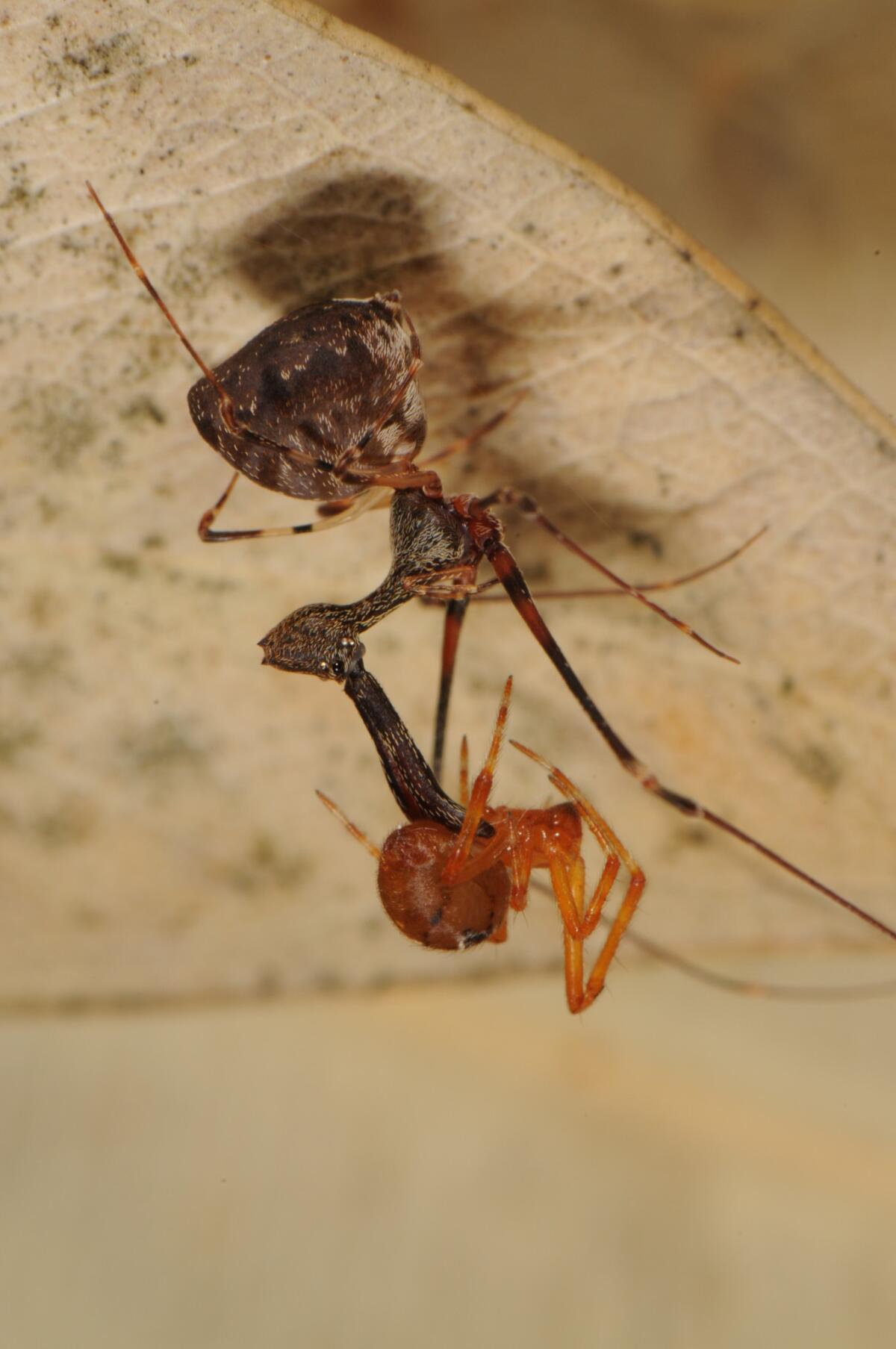
Arachnologists discovered pelican spiders in 1854, finding a specimen preserved in 50-million-year-old amber. At the time, experts assumed the odd-looking spider was extinct. But a few decades later, a species remarkably similar to the amber-entombed fossil was found thriving in Madagascar.
Eriauchenius workmani is the most common type of pelican spider in Madagascar’s eastern rainforest. It’s also the largest, about the same length as a grain of rice.
“You don’t need to look at it under a microscope to appreciate it,” said Hannah Wood, curator of arachnids and myriapods (a group that includes centipedes and millipedes) at the Smithsonian National Museum of Natural History in Washington, D.C. “It’s a really pretty species, I think. You look at it and you won’t even think it’s a spider … because it looks so bizarre.”
Since E. workmani’s discovery, the number of known pelican spider species has exploded. It ballooned again this month with the unveiling of 18 additional species that hail from Madagascar, home to the largest branch of the strange spider family.
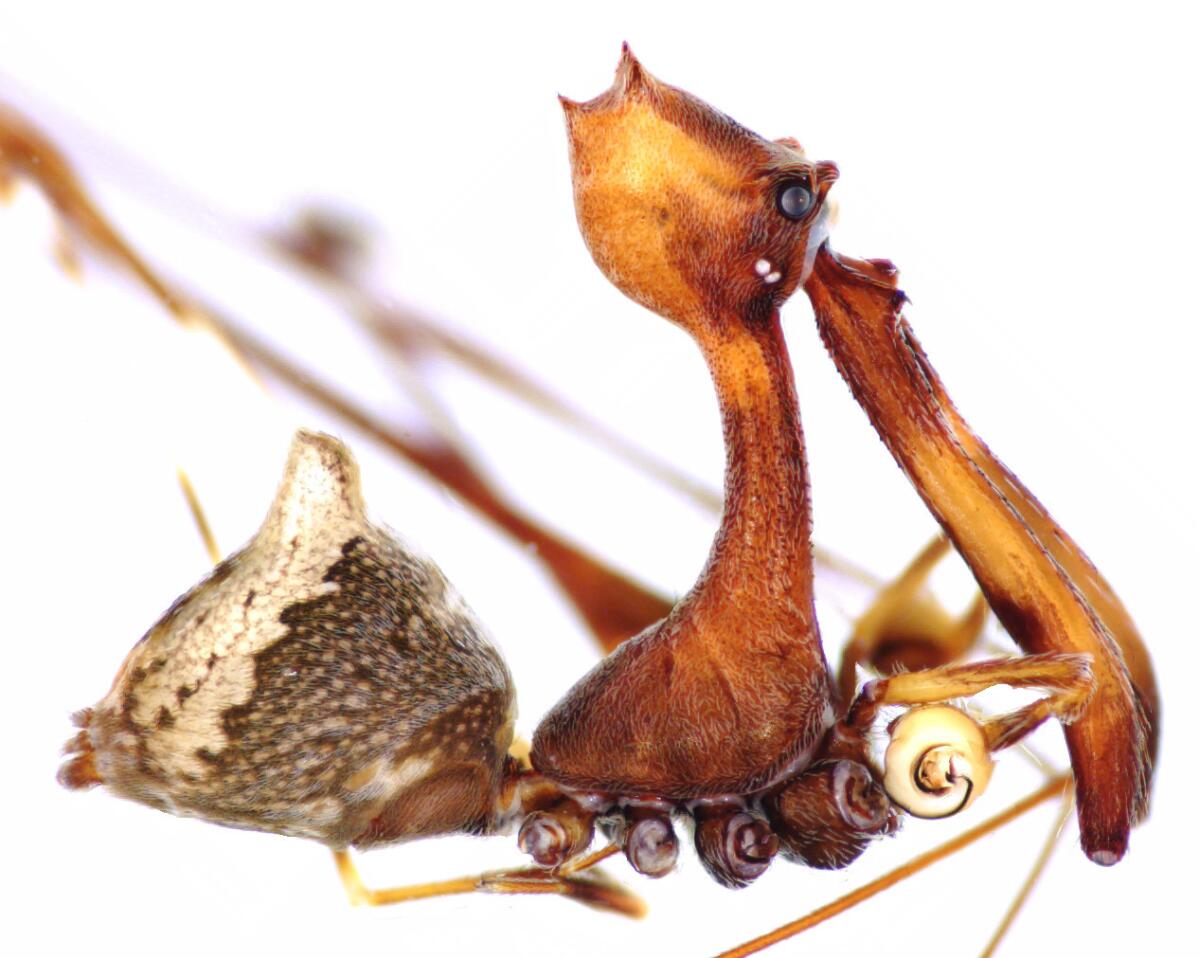
Wood and Nokolaj Scharff of the University of Copenhagen and the Natural History Museum of Denmark described the new species (along with eight others) in the journal Zookeys.
The total number of pelican spider species in Madagascar now stands at about 40, but Wood believes there could be up to 40 more waiting to be found. It’s common for arachnids to hide in leaf litter during the day, making them hard to spot even if you’re looking for them, she said.
There have been times when Wood went searching for a particular species but found a whole new one instead.
“Every time someone goes there, it seems there’s a new species that turns up,” she said.
Many of these species, such as the triangular-headed Eriauchenius pauliani, are known from only one or two museum specimens.
“I really want to collect this spider alive and just see what it’s doing, but so far this species has proven to be quite elusive,” Wood said. “I hope it’s still alive. The last specimen was collected in the 1960s.”
During a 2008 expedition in Andohahela National Park, Wood searched in vain for a species she’d described based on two females and a juvenile specimen stored in the collection of the California Academy of Sciences in San Francisco.
In the Zookeys paper, she named the spider Eriauchenius milajaneae, after her daughter Mila Jane, “in the hope that one day she will go to Andohahela to find this spider.”
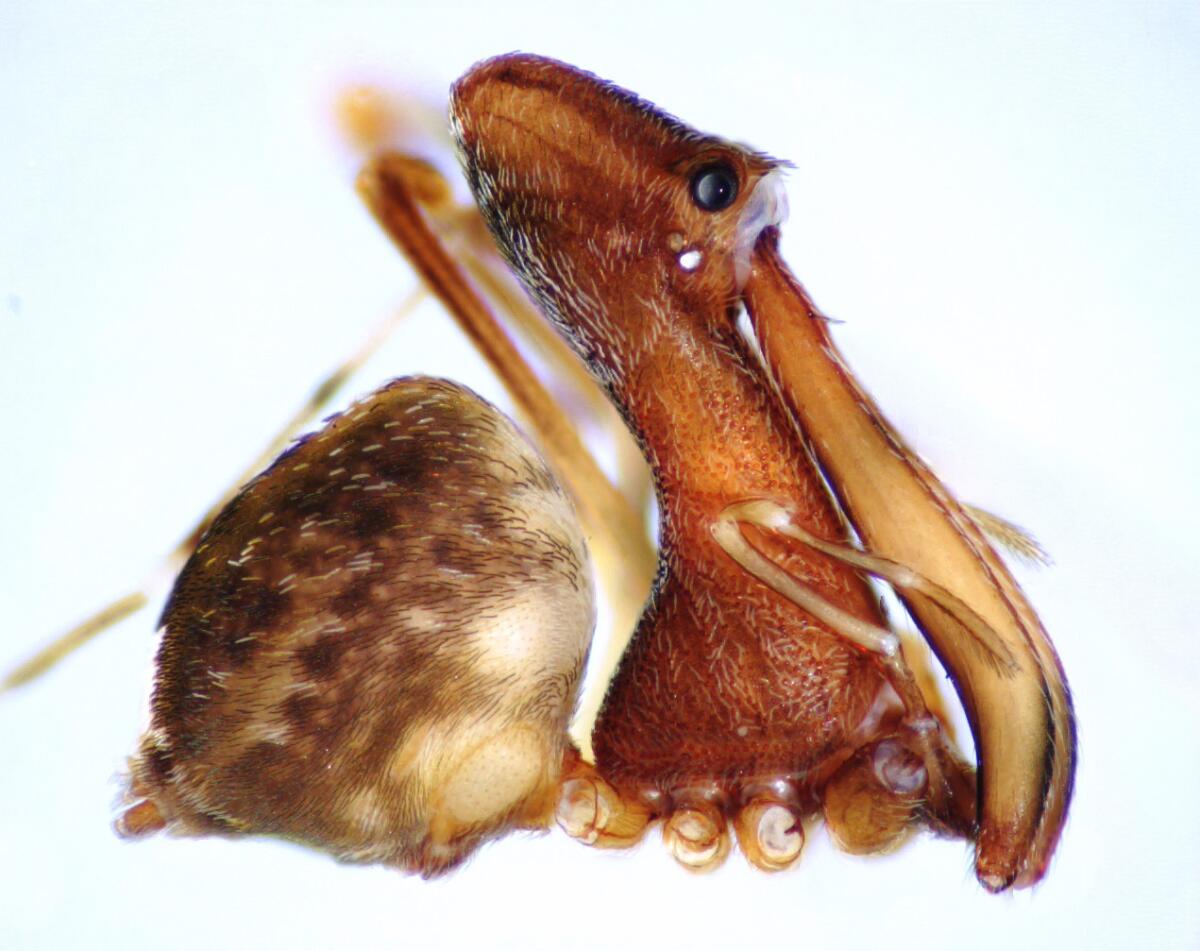
Wood’s fascination with pelican spiders (and the four other members of the superfamily Palpimanoidea) goes back 10 years. Previously, she unraveled the secrets of trap-jaw spiders, a related family with lightning-fast mandibles.
“From the beginning, I’d look at these [pelican] spiders and I wanted to know why they looked the way they did,” she said.
By building out the species’ evolutionary relationships, Wood and colleagues hoped to uncover answers about how these spiders developed their strange traits.
Pelican spiders probably spread more than 180 million years ago, while the super-continent Pangea was still intact. The spiders that ended up on the northern continent of Laurasia (which became North America, Europe and Asia) eventually went extinct. Living pelican spiders are found only in Madagascar, South Africa and Australia.

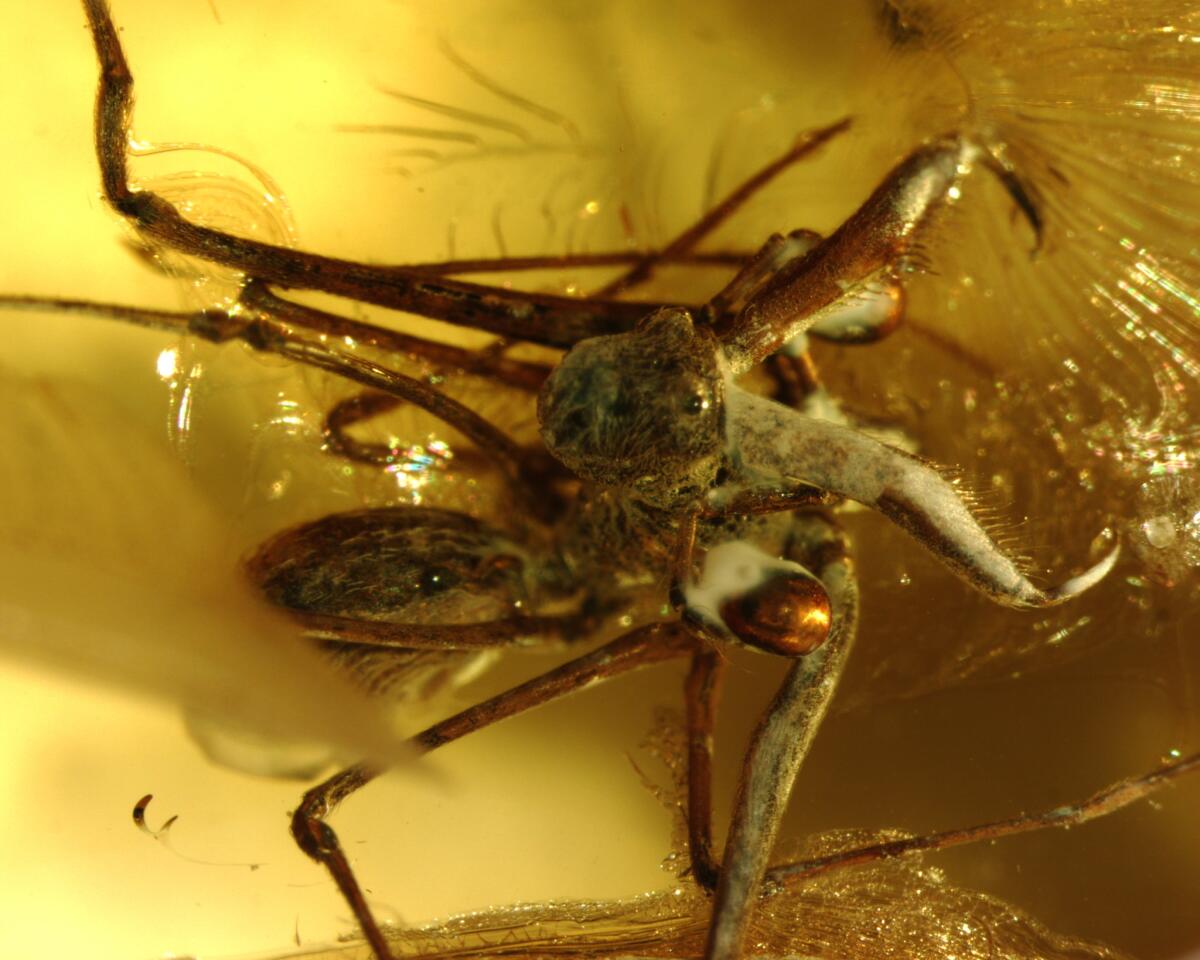
Fossilized pelican spiders have shorter necks and jaws than their modern-day descendants. As the spiders’ features stretched out, they were able to take advantage of a new and dangerous prey: other spiders.
If that’s not weird enough, consider this: Their heads are stretched into a tubular structure that gives the appearance of a separate “head” and “neck.” The spiders’ mouths are actually below the “neck.”
The head-like bulb is loaded with muscles to power their highly maneuverable jaws, which they use to impale their prey.
“Other spiders can potentially harm them [with] venom or silk,” Wood said. “Essentially, they’re attacking their prey at a distance and keeping it very far away until it’s dead.”
Pelican spiders may sound intimidating, but they’re actually afraid of anything that isn’t their potential prey.
“I’ve never been bit by one,” Wood said. “They’re going to be very scary if you’re another spider, but for everything else they’re just going to drop to the ground. They’re not fighters at all.”
In Madagascar, the pelican spiders live far from humans in pristine mountaintop rainforests. But the island has lost a large amount of its forests to logging and rice farming, threatening its diverse array of life.
“I’m very certain we already lost numerous pelican spiders that we never knew existed,” Wood said.
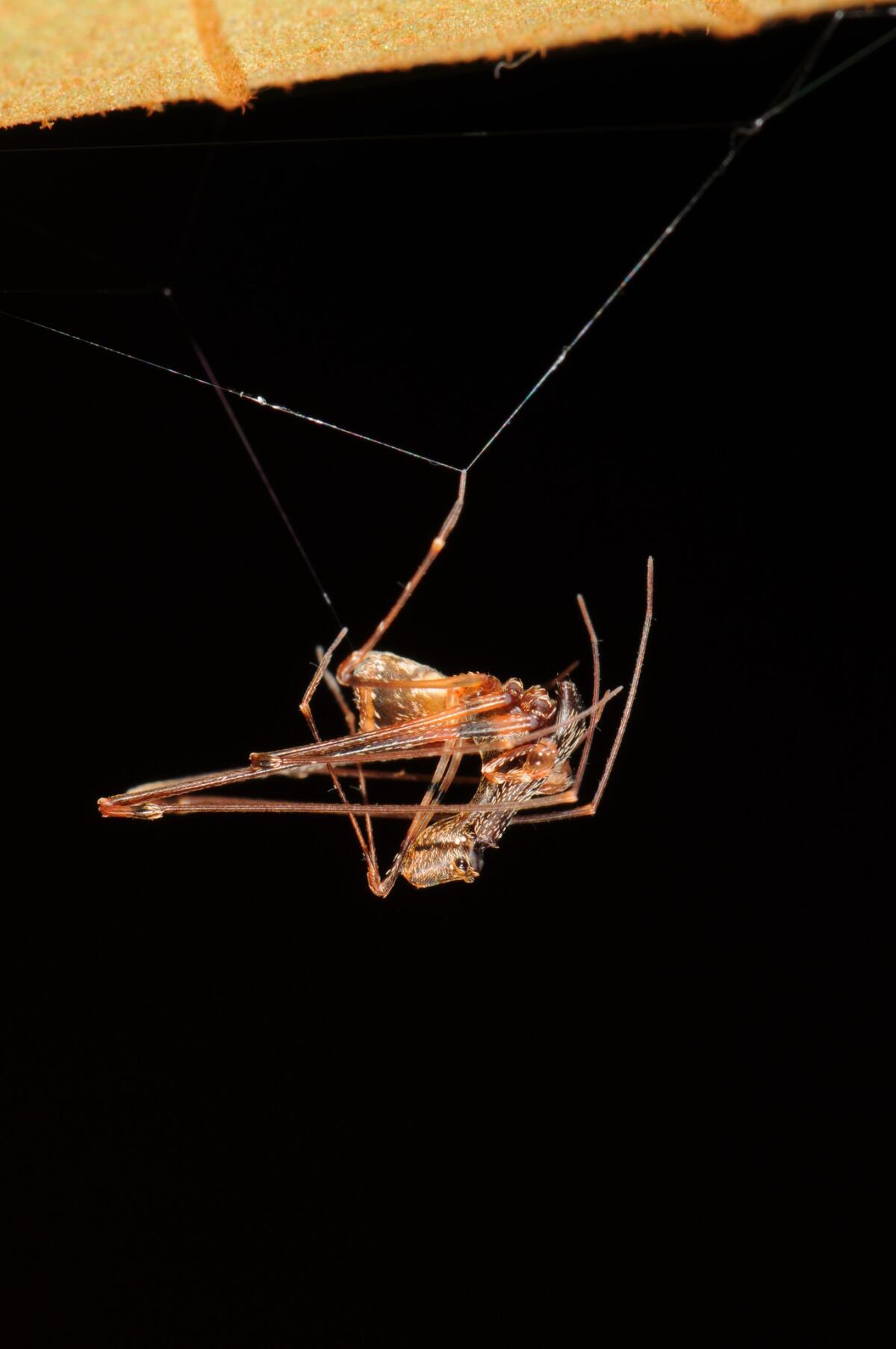
MORE IN SCIENCE
Fossil found in Israeli cave may change the story of human migration out of Africa
The search for life on other planets could get a boost from biosignatures
Tobacco giant presses its case for a better-for-you cigarette




